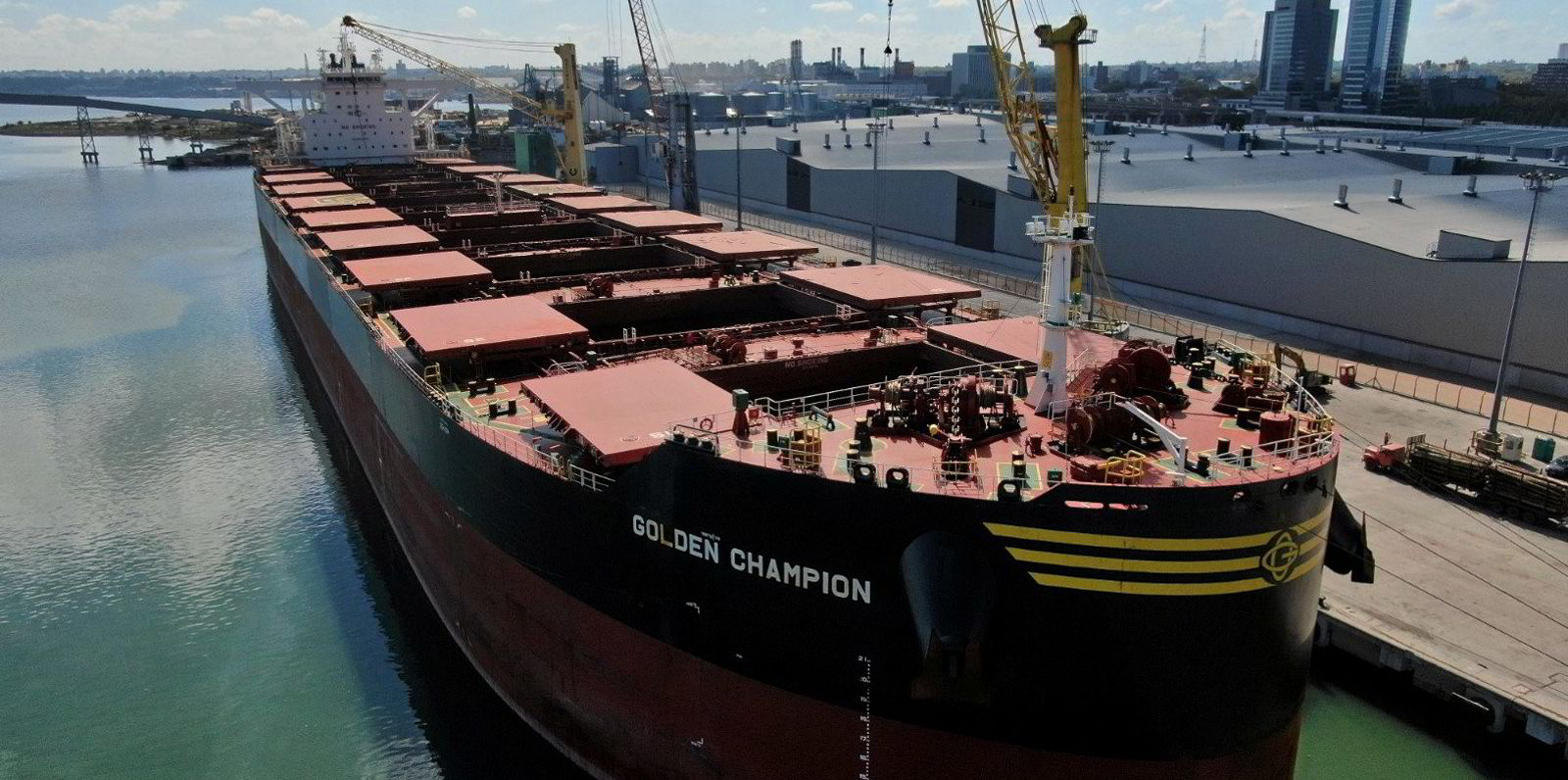Bulker owner Golden Ocean Group has positioned itself for an upturn in spot markets this year and has been putting new financing in place to help it keep paying out to shareholders.
The Oslo and Nasdaq-listed company finished 2023 on a positive note with its most profitable quarter of the year and its biggest dividend since 2022, as TradeWinds reported on Wednesday.
Lars-Christian Svensen, who was made permanent CEO in January, told TradeWinds the immediate strategy is to keep paying out to shareholders while maximising its net earnings.
“Our strategy remains downside protection due to a low cash breakeven and a significant upside potential to tilt toward the spot market when we see encouraging markets without hampering the dividend capacity,” he said.
The company was able to generate “solid” numbers in the final quarter of 2023 on the back of its spot exposure, he said, allowing it to ride rising freight rates.
“The decision was made at the end of last year to continue with the spot strategy as we entered [the first quarter], with the bauxite and iron ore fundamentals looking good,” he explained.
“So far, this has turned out to be a good play, especially considering the tonne-mile addition to the freight market due to the unrest in Suez.
“The iron ore volumes from Brazil and coal stems from Colombia have increased 20% and 40% respectively year on year, further boosting the market.”
But all this came in the face of a complex and often contradictory picture for market fundamentals last year.
Golden Ocean Group reported adjusted net profit before tax of $64.6m for the fourth quarter, equivalent to $0.32 in earnings per share.
Net income on a non-adjusted basis was $57.5m, down from $68.2m a year ago.
The annual result did not quite compare with 2022, when freight markets were much stronger.
Golden Ocean finished 2023 with net income of $112.3m, down from $461.8m in 2022.
Total operating revenue shrank to $885.8m last year, down from $1.1bn the previous year.
Golden Ocean will pay out $0.30 per share in dividends for the fourth quarter, its biggest quarterly payout since late 2022.
“2023 became a ‘tug of war’ between negative macro news and the physical drivers in the market. Chinese steel exports increased rapidly for the year, which assisted the iron ore imports and consumption, albeit an unstable property sector,” Svensen said.
“With the conclusion in hand, the physical market continued to excel, and we have had a historically strong [first quarter] so far.”
Longer-haul trade routes for capesizes and newcastlemaxes and an ultra-low orderbook — which is nearing a 30-year nadir — means Golden Ocean is optimistic for larger bulkers in particular.
It will be predominantly exposed to the spot market in the next quarter with low levels of forward bookings.
Around 25% of Golden Ocean’s capesize operating days have been fixed at a daily time charter equivalent rate of about $25,000 in the second quarter.
Just 19% of panamax days have been covered at $14,200 per day on average next quarter.
Analysts were impressed on Wednesday by the firm rates for these bookings, which they said could lead to revised estimates for the company this year.
The Golden Ocean fleet has an average daily cash breakeven of $14,000.
Getting greener
For some time now, the company has been looking at ways to monetise decarbonisation, principally by finding ways to cut bunker costs by modifying its fleet to be more efficient.
This will soon begin to translate into vessel earnings, according to Svensen.
“Energy efficiency will also be in focus for 2024 when we retrofit and upgrade our fleet, which will be shown in our increased net [time charter] earnings in the coming years,” he told TradeWinds.
“We have no capex of size in the coming year, and dividends will be a priority as we enter another strong dry bulk cycle.”
The company signed a $360m sustainability-linked credit facility this month to refinance 20 of its vessels over five years. The loan has an age-adjusted amortisation profile of 20 years.
Svensen said the facility was provided by “five leading global shipping banks” but did not name names.
“We have several sustainability-linked financings in our portfolio, both bilateral and club deals,” he said.
“The financings measure the carbon emissions on our fleet up against a pre-defined emission reduction trajectory. Emissions reporting is already part of reporting requirements to the banks through Poseidon Principles, as verified by class societies such as DNV.”
Golden Ocean’s live fleet comprises 52 capesizes and 31 panamaxes, plus a further eight capesizes chartered in on long-term leases with profit-sharing arrangements.
The owner has three 85,000-dwt kamsarmaxes on order at China’s Dalian Shipbuilding. One ship will deliver this year and the other pair in 2025.
The new facility is priced with an interest rate of SOFR plus a margin of 175 basis points per annum, which can be adjusted by an additional five basis points depending on the shipowner’s emission reduction performance.
Golden Ocean also received credit approval this month for a five-year $180m loan that will refinance six newcastlemaxes. The financing bears interest of SOFR plus a margin of 160 basis points per annum.
In the meantime, it plans to keep renewing its fleet. Its vessels are seven years old on average, but it still has 15 bulkers aged 10 years or older.
“We continue to focus on our existing vessels, where we will divest older tonnage that does not fit the core fleet. At the same time, we are always on the lookout for appropriate modern tonnage that complements our current vessel pool,” Svensen said.
Golden Ocean confirmed that it had just sold another panamax, but the CEO declined to identify the ship.




